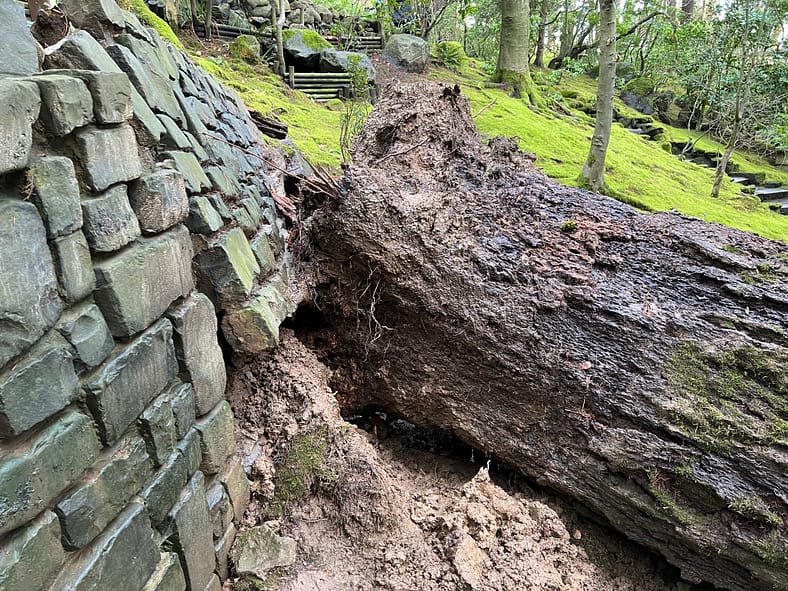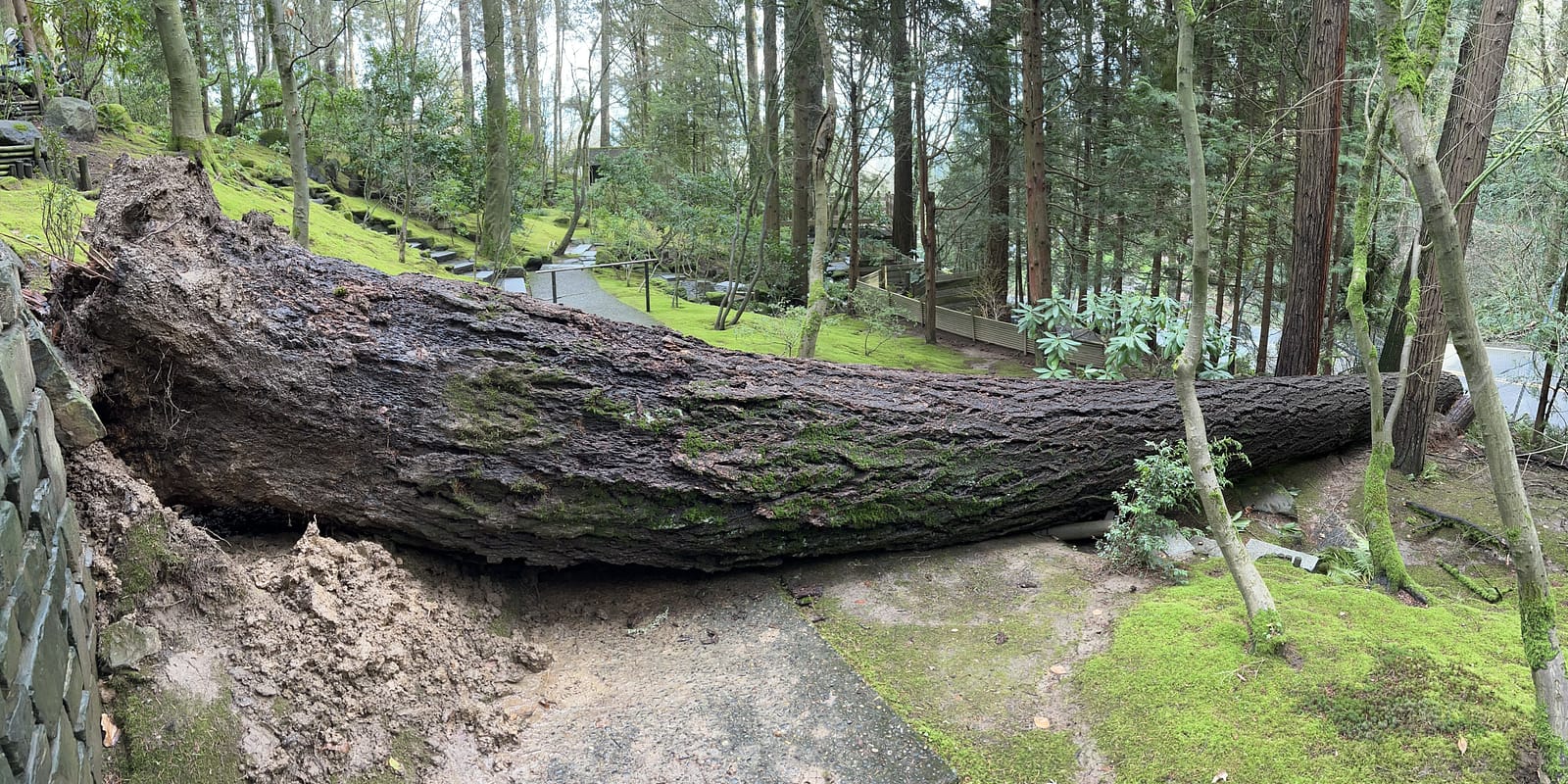Of Portland Japanese Garden’s five historic garden spaces, the Natural Garden is the most contemporary in its design and, living up to its name, the garden that most resembles a natural area. Situated on a sloped terrain and featuring narrow walkways that bridge over water and weave through a tapestry of deciduous plants, the Natural Garden evokes the sense of being in the Columba River Gorge. It is perhaps fitting then that this space felt the impact of untamed nature late last year.

Prior to the December holidays, a Douglas fir that had grown at least 80 feet in height succumbed to the harsh winter weather that fell upon the Portland metro area. A confluence of saturated ground from weeks of persistent precipitation and strong winds unmoored this friendly giant from its footing and all of its massive frame crashed to the ground. Its untimely descent caused temporary closure of the Natural Garden and otherwise disrupted its environs:
- The tree landed onto Kingston Drive, a road that bends and curves through Washington Park, requiring its temporary closure.
- A section of the border fence separating Portland Japanese Garden from Kingston Drive was cratered and warped.
- Trees near the Douglas fir were damaged; five incense cedars were deemed to be hazardous and had to be removed.
- A stone wall below a wooden deck and seating area was compromised and is currently being repaired.

Aside from some stumps left behind, visitors may not recognize any profound changes since it was only but a few trees that were removed. However, as Garden Curator Hugo Torii notes, “For spirits in the garden, it may be a significant loss since it was one of the largest trees in the Natural Garden.”
Torii and his gardening staff will now have to assess how the absence of the removed trees will effect the balance of the Natural Garden. In Japanese gardens, views are carefully controlled, both within and what might one glimpse beyond its boundaries.
Whatever changes may come, it will not be the first time the Natural Garden has had to accommodate nature, the ultimate arbiter of how Portland Japanese Garden takes its form. In the 1960s, Portland Japanese Garden’s original designer, Professor Takuma Tono, had intended the Natural Garden to be a moss garden (kokeniwa). However, the hill set aside for this purpose was far too sunny and was redesigned in the 1970s and again in 1990 to take the form visitors and staff enjoy today.





